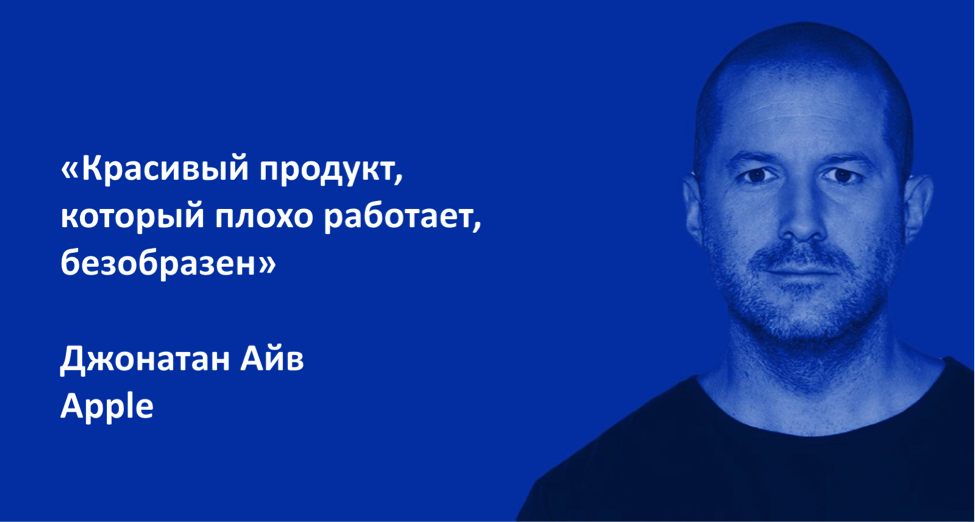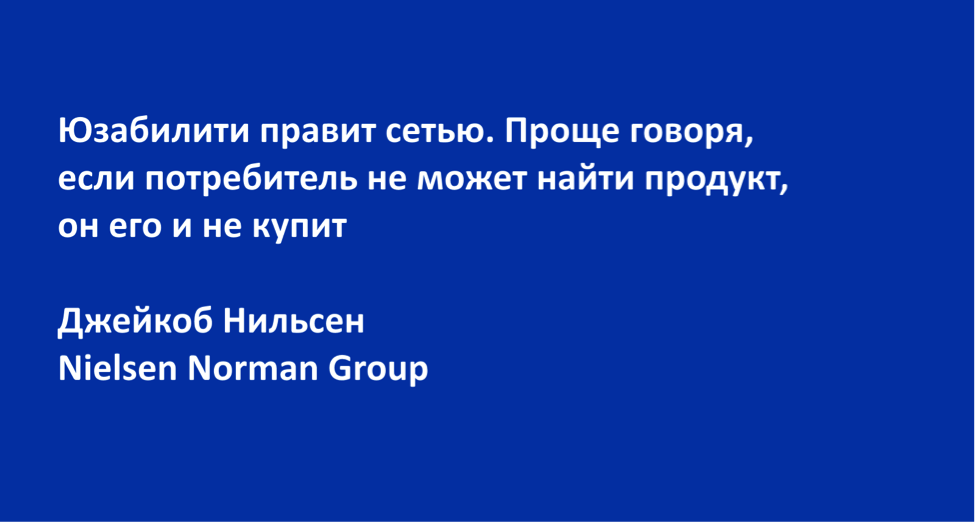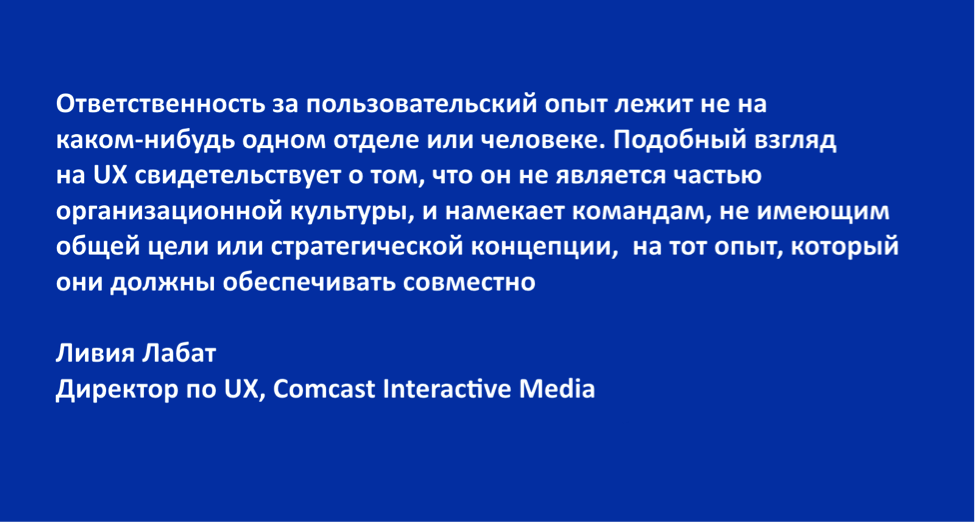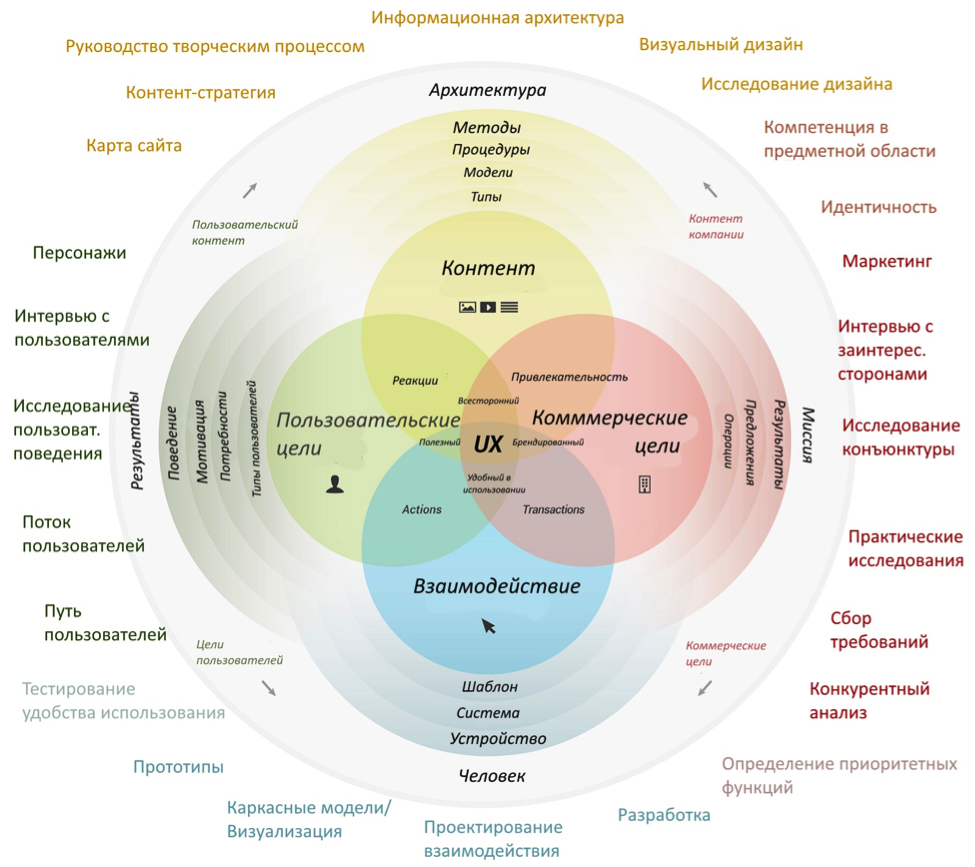UX Design: Common Misconceptions and Myths
What does the user see in the product? Interface. It doesn’t matter how many nights you haven’t slept while building the application architecture, how beautiful the code is. The main thing is that everything should be intuitive and work. In one of our previous publications, we talked about what we are doing to create a single user experience. This is an interesting topic, now we are preparing new cases for publication, and while the material is on the editorial board, we offer to read and favor on the topic of popular myths and misconceptions about UX design. Thanks for the Miklos Philips stuff .

It seems that even now, UX is still a buzzword in many companies - “We don’t just need a designer,” says the vice president of new products. “We need a UX designer!” All those present at the meeting gasp, nod and secretly google “What is UX design?” And “What is a UX designer doing?”
Of course, today most people already know that UX stands for "user experience", i.e. "User experience". But this does not mean that everyone really understands what it is made up of and how it works. Moreover, it is very difficult to explain what a design that takes into account user experience is, or what a UX designer actually does.
In short, UX is the perception by users of all aspects of the system (site, application, product, service, community, etc.). Companies strive to achieve positive, consistent, predictable and desired results through user experience, which may include an interface, industrial design, physical interaction, and much more.
UX design is a special discipline dedicated to what UX designers do, and user-oriented design (UCD) is a processUX design. Another commonly used term is design thinking. Typically, this practice includes research on user behavior, sketching, wireframing, interaction design, visual design, prototyping, user testing, and an iterative design approach.

Understanding UX design - what it is and what it is not - will help everyone connected with it to create superior products with excellent user experience. To this end, I would like to consider some common misconceptions and myths about UX design:
An interface is not a solution yet . UI design, as a rule, plays an important role in the work of a UX designer, but this is not its only element. Figuratively speaking, UX design is a journey , and UI is a destination .
UX-design is a multi-stage strategic design process , the purpose of which is to create a product or website that consumers / users find attractive, easy to use and understandable. And using the UX design, we end up with the optimal user interface for us.
In the complex process of UX-design, you can select at least 10 steps necessary to create a ready-made user interface.
And finally, we get the final user interface design and arrive at our destination .

Illustration: Shane Rounds
Aesthetics alone are not enough to provide a high degree of usability. Aesthetics is only the appearance , and UX design is the appearance , the general sensations , and the quality of work .
Great user experience is a prerequisite for creating a successful digital product design. Of course, visual appeal and aesthetics in general are very important, but they represent only the final touch in creating an easy-to-use product, which is also very pleasant to use. Someone compares them with paint, which is applied to an already constructed building. The pursuit of aesthetic excellence without attention to usability will ultimately lead to failure.
If the user experience was associated only with aesthetics, then the usability of the product should have faded into the background. But usability is a decisive indicator of quality, which determines how convenient the corresponding product is in use. The consumer is unlikely to be very concerned about how the product looks if he cannot use it .
Whether a product is useful is defined in terms of functionality , as well as usability. The first of these elements ensures the availability of the functions people need, and the second depends on how easy and pleasant it is to use these functions. A design based solely on aesthetics and ignoring the basic principles of usability ultimately turns out to be by definitionuseless .

UX design is not just any checkbox (check box). It should be integrated into everything the company does.
UX design is not just a stage in the design process, but a repeated, continuous use of design thinking in relation to consumer interaction with the services and products of a company. This process never ends.
For example, the Interaction Design Foundation gives the following definition of UX design: “This is the process of creating products that provide a meaningful and deeply personal experience. It involves increased attention to both the usability of the product and the pleasure that consumers receive using it. In addition, UX design is associated with the overall process of acquiring and integrating a product, including aspects such as branding, design, usability and functionality. ”

UX-design is not limited to the screen of the computer owned by the user and is not any separate layer or component in the composition of the product or service. This is a holistic experience , contextually acting at all levels as a whole.
UX-design takes into account the human factor in a certain context and covers all aspects of the ecosystem in which the corresponding products are used. It is associated with the holistic development of experience, when “the whole is considered as something more than just the sum of the components”, and with the maintenance of a similar orientation throughout the entire time of interaction with the consumer, as well as with all points of contact of the user with the product.

Undoubtedly, usability - or usability - is essential to the success of any user experience. Nevertheless, under the UX umbrella there are a lot of different things, and usability is just one of them. The user interface can be very convenient to use, but not reach the goal, for example, when it comes to providing what the consumer needs, at the right time and in the right way.
As we already mentioned, the user interface can be aesthetically pleasing and enjoyable to use, but at the same time it looks completely pathetic under the microscope of heuristic analysis when checking in detail all the elements providing a high level of usability.

A heuristic rating reveals a low level of usability. An example of identifying usability problems using heuristic analysis (author: Cory Haggard ).
A quality product must satisfy users at many levels. It should be:
If the product is inconvenient to use, the consumer simply passes by it, regardless of how good the visual design is - how cool that micro-animation is - and your UX design goes down the drain. If it is done correctly - and you will already be on the way to a very significant improvement in the user experience. The product will have a much greater chance of success, which, in turn, will contribute to the final indicators.

In addition to all of the above, UX-design must comply with commercial goals and objectives. It all starts with an understanding of the concept of the product, the reasons for its existence from a commercial point of view. At the same time, the needs of the target market should be taken into account, problems should be solved and effective solutions should be developed.
If a UX designer focuses only on creating an optimal user experience, forgetting about commercial goals, he will fail. This mistake is made by many newcomers to the UX profession, who often give completely unrealistic recommendations. The existence of companies is ensured by their profitability.
Take into account the needs of the business, for example, by using when determining commercial goals for a UX project using the SMART scheme :
Specific (concrete),
Measurable (measurable),
Actionable (realizable),
Realistic (realistic),
Time-Based (time-controlled).
Designers should consider their work from a business point of view, think strategically, take into account priorities and work not only for users, but also to achieve commercial goals.

Of course, theoretically, someone can spend a lot - “go all-in” - and use the whole range of methods and tools that make up the whole UX process. In reality, no one does that. Most companies cite high costs (myth) and lack of time when they try to justify refusing to implement the most important elements of UX design, such as research on user behavior and user testing. In fact - especially when it comes to researching user behavior - companies cannot afford not to.
In reality, the best UX designers have a certain set of methods that can be used for a variety of projects and a variety of budgets. For example, without very high costs, you can discover very broad design possibilities and get a lot of important analytical information as a result of a study in which only five users participate. Similarly, the completely inexpensive testing of a simple prototype by the same five users reveals most of the usability issues and shows the developers of the product what works and what doesn't.
Another method is heuristic analysis.. Only five experts can identify more than 80% of the problems associated with the usability of the product - and this is completely inexpensive, especially when you consider the costs that may result from the lack of such testing.
A bad user experience will be much more expensive than a good one. The consequences of unimportant UX design always create additional interference for the user. Interference leads to irritation, and when the irritation reaches a certain limit, people simply refuse the corresponding product.
In this animated video , Dr. Susan Weinschenk shows how user-oriented design leads to a significant increase in return on investment.
The responsibility for user experience should rest with the entire company. If a company does not use a client-centric design technique when developing its products and services, it will undoubtedly be circumvented by competitors who do not neglect this technique. Companies in which UX-design specialists are forced to work in isolation and only “preen” a product already created make a big mistake.
The integration of user-centric design (UCD) in the strategic concept, mission and culture of the company is a vital point. All the most successful companies do this. At the same time, UX design has many different definitions: it is called “user-oriented design” (a definition adopted by Amazon), “customer experience” (CX), or “service design”

The UX designer is a “practicing specialist in design thinking ”, a “jack of all trades” in the field of user experience, whose main task is to ensure customer satisfaction with the product. UX-design includes many different disciplines, approaches, techniques and tools: analysis of commercial goals, competitive analysis , character development, user behavior research , empathy mapping, studying “user paths”, information architecture, content strategy, interaction design , interface design, visual design, prototype development , heuristic analysis , user testing ... and much more.

User Experience Model (circuit author: Corey Stern )
In the modern world, UX design simply cannot be a kind of “addition” to which companies turn after they have done “all the most important” things such as defining business goals, market analysis, drawing up product requirements, engineering, sales and marketing. Today, UX design has to be integrated into everything the company does.
Products are not only their characteristics and functionality. Sites, applications, or B2B SaaS products are not just utilities. Companies can not get the full return on their investment if their result is only a short-term emotional reaction of consumers, caused by the efforts of designers who were focused solely on functionality and aesthetics. In any long-term positive emotional reaction, there must necessarily be a value component, and the product design should constantly give pleasure to users. Thus, UX design is essential for long-term success.

UX-design is primarily associated with increasing customer satisfaction and loyalty by providing a positive experience in all points of their interaction with a brand or company.
Recent studies by Forrester Research show that an interface with a quality design can potentially increase a site’s performance by 200% or even 400% (with further improvement). You can’t argue with numbers - they speak for themselves.
Once these myths are dispelled and the misconceptions about the UX design are refuted, it becomes clear that it can have a huge impact on the overall development of the company, provide benefits, and the UX process should be integrated into everything that it does. And what other misconceptions and myths have you encountered?

It seems that even now, UX is still a buzzword in many companies - “We don’t just need a designer,” says the vice president of new products. “We need a UX designer!” All those present at the meeting gasp, nod and secretly google “What is UX design?” And “What is a UX designer doing?”
Of course, today most people already know that UX stands for "user experience", i.e. "User experience". But this does not mean that everyone really understands what it is made up of and how it works. Moreover, it is very difficult to explain what a design that takes into account user experience is, or what a UX designer actually does.
In short, UX is the perception by users of all aspects of the system (site, application, product, service, community, etc.). Companies strive to achieve positive, consistent, predictable and desired results through user experience, which may include an interface, industrial design, physical interaction, and much more.
UX design is a special discipline dedicated to what UX designers do, and user-oriented design (UCD) is a processUX design. Another commonly used term is design thinking. Typically, this practice includes research on user behavior, sketching, wireframing, interaction design, visual design, prototyping, user testing, and an iterative design approach.

Understanding UX design - what it is and what it is not - will help everyone connected with it to create superior products with excellent user experience. To this end, I would like to consider some common misconceptions and myths about UX design:
User Experience (UX) is not a User Interface (UI)
An interface is not a solution yet . UI design, as a rule, plays an important role in the work of a UX designer, but this is not its only element. Figuratively speaking, UX design is a journey , and UI is a destination .
UX-design is a multi-stage strategic design process , the purpose of which is to create a product or website that consumers / users find attractive, easy to use and understandable. And using the UX design, we end up with the optimal user interface for us.
In the complex process of UX-design, you can select at least 10 steps necessary to create a ready-made user interface.
- Analysis of business goals and specifications
- Competitive environment analysis reports
- Character development and user experience learning
- Site map and information architecture
- User Experience Maps, User Paths and Flows
- Sketches and wireframes
- Layouts and interaction design
- Interactive Prototypes
- Usability testing
- Visual design
And finally, we get the final user interface design and arrive at our destination .

Illustration: Shane Rounds
UX design is not only aesthetics
Aesthetics alone are not enough to provide a high degree of usability. Aesthetics is only the appearance , and UX design is the appearance , the general sensations , and the quality of work .
Great user experience is a prerequisite for creating a successful digital product design. Of course, visual appeal and aesthetics in general are very important, but they represent only the final touch in creating an easy-to-use product, which is also very pleasant to use. Someone compares them with paint, which is applied to an already constructed building. The pursuit of aesthetic excellence without attention to usability will ultimately lead to failure.
If the user experience was associated only with aesthetics, then the usability of the product should have faded into the background. But usability is a decisive indicator of quality, which determines how convenient the corresponding product is in use. The consumer is unlikely to be very concerned about how the product looks if he cannot use it .
Whether a product is useful is defined in terms of functionality , as well as usability. The first of these elements ensures the availability of the functions people need, and the second depends on how easy and pleasant it is to use these functions. A design based solely on aesthetics and ignoring the basic principles of usability ultimately turns out to be by definitionuseless .

UX design is not just one step in a big process
UX design is not just any checkbox (check box). It should be integrated into everything the company does.
“Most customers believe that UX design is a separate line of business that can solve all problems by identifying functional requirements or conducting some kind of research. In fact, this is a constant work, a continuous process of obtaining new information about users, responding to their behavior and developing a product or service, ”Dan Brown, co-founder and director of EightShapes .
UX design is not just a stage in the design process, but a repeated, continuous use of design thinking in relation to consumer interaction with the services and products of a company. This process never ends.
For example, the Interaction Design Foundation gives the following definition of UX design: “This is the process of creating products that provide a meaningful and deeply personal experience. It involves increased attention to both the usability of the product and the pleasure that consumers receive using it. In addition, UX design is associated with the overall process of acquiring and integrating a product, including aspects such as branding, design, usability and functionality. ”

UX design is more than just digital product design
UX-design is not limited to the screen of the computer owned by the user and is not any separate layer or component in the composition of the product or service. This is a holistic experience , contextually acting at all levels as a whole.
UX-design takes into account the human factor in a certain context and covers all aspects of the ecosystem in which the corresponding products are used. It is associated with the holistic development of experience, when “the whole is considered as something more than just the sum of the components”, and with the maintenance of a similar orientation throughout the entire time of interaction with the consumer, as well as with all points of contact of the user with the product.
As Don Norman says : “User experience covers all aspects of the interaction of the end user with the company, its services and its products.”
“UX design is not limited to computers. He doesn’t even need a screen ... User experience is any interaction with any product, any artifact, any system, ”Bill Derushi, director of interaction design at Ziba Design.

UX design is not just about usability
Undoubtedly, usability - or usability - is essential to the success of any user experience. Nevertheless, under the UX umbrella there are a lot of different things, and usability is just one of them. The user interface can be very convenient to use, but not reach the goal, for example, when it comes to providing what the consumer needs, at the right time and in the right way.
As we already mentioned, the user interface can be aesthetically pleasing and enjoyable to use, but at the same time it looks completely pathetic under the microscope of heuristic analysis when checking in detail all the elements providing a high level of usability.

A heuristic rating reveals a low level of usability. An example of identifying usability problems using heuristic analysis (author: Cory Haggard ).
A quality product must satisfy users at many levels. It should be:
Useful
Why should I use it? Does it serve any purpose? Does it satisfy any needs?
Easy to use.
Is it intuitive? Is it easy to use? Is it available?
Attractive
Is he aesthetically attractive? Is it different from others? Is it remembered?
Sustainable
Can I keep it? Is he capable of development? Can it be supported? Is it scalable?
Social
Does it make communication easier? Does sharing support? Does community creation encourage?
If the product is inconvenient to use, the consumer simply passes by it, regardless of how good the visual design is - how cool that micro-animation is - and your UX design goes down the drain. If it is done correctly - and you will already be on the way to a very significant improvement in the user experience. The product will have a much greater chance of success, which, in turn, will contribute to the final indicators.
“Although usability is important, focusing on efficiency seems to obscure other important factors in the user's experience - for example, ease of development, as well as unconscious and behavioral emotional reactions to the products and services we use,” - David Maluf, professor of design Interactions, Savannah College of Art and Design

UX design is not just about the user
In addition to all of the above, UX-design must comply with commercial goals and objectives. It all starts with an understanding of the concept of the product, the reasons for its existence from a commercial point of view. At the same time, the needs of the target market should be taken into account, problems should be solved and effective solutions should be developed.
If a UX designer focuses only on creating an optimal user experience, forgetting about commercial goals, he will fail. This mistake is made by many newcomers to the UX profession, who often give completely unrealistic recommendations. The existence of companies is ensured by their profitability.
Take into account the needs of the business, for example, by using when determining commercial goals for a UX project using the SMART scheme :
Specific (concrete),
Measurable (measurable),
Actionable (realizable),
Realistic (realistic),
Time-Based (time-controlled).
Designers should consider their work from a business point of view, think strategically, take into account priorities and work not only for users, but also to achieve commercial goals.
“We simply cannot always do what is best for users. In addition, we also need to achieve certain commercial goals - and our design work is aimed at that too. ”- Russ Unger, Director of User Experience Planning, DraftFCB

UX design does not cost much
Of course, theoretically, someone can spend a lot - “go all-in” - and use the whole range of methods and tools that make up the whole UX process. In reality, no one does that. Most companies cite high costs (myth) and lack of time when they try to justify refusing to implement the most important elements of UX design, such as research on user behavior and user testing. In fact - especially when it comes to researching user behavior - companies cannot afford not to.
In reality, the best UX designers have a certain set of methods that can be used for a variety of projects and a variety of budgets. For example, without very high costs, you can discover very broad design possibilities and get a lot of important analytical information as a result of a study in which only five users participate. Similarly, the completely inexpensive testing of a simple prototype by the same five users reveals most of the usability issues and shows the developers of the product what works and what doesn't.
Another method is heuristic analysis.. Only five experts can identify more than 80% of the problems associated with the usability of the product - and this is completely inexpensive, especially when you consider the costs that may result from the lack of such testing.
“Poor design interferes,” said Jared M. Spool, founder of User Interface Engineering
A bad user experience will be much more expensive than a good one. The consequences of unimportant UX design always create additional interference for the user. Interference leads to irritation, and when the irritation reaches a certain limit, people simply refuse the corresponding product.
Return on investment in UX design in terms of user experience
In this animated video , Dr. Susan Weinschenk shows how user-oriented design leads to a significant increase in return on investment.
UX design is not just the role of one person or department
The responsibility for user experience should rest with the entire company. If a company does not use a client-centric design technique when developing its products and services, it will undoubtedly be circumvented by competitors who do not neglect this technique. Companies in which UX-design specialists are forced to work in isolation and only “preen” a product already created make a big mistake.
The integration of user-centric design (UCD) in the strategic concept, mission and culture of the company is a vital point. All the most successful companies do this. At the same time, UX design has many different definitions: it is called “user-oriented design” (a definition adopted by Amazon), “customer experience” (CX), or “service design”

UX design is more than one discipline
The UX designer is a “practicing specialist in design thinking ”, a “jack of all trades” in the field of user experience, whose main task is to ensure customer satisfaction with the product. UX-design includes many different disciplines, approaches, techniques and tools: analysis of commercial goals, competitive analysis , character development, user behavior research , empathy mapping, studying “user paths”, information architecture, content strategy, interaction design , interface design, visual design, prototype development , heuristic analysis , user testing ... and much more.

User Experience Model (circuit author: Corey Stern )
UX design required
In the modern world, UX design simply cannot be a kind of “addition” to which companies turn after they have done “all the most important” things such as defining business goals, market analysis, drawing up product requirements, engineering, sales and marketing. Today, UX design has to be integrated into everything the company does.
Products are not only their characteristics and functionality. Sites, applications, or B2B SaaS products are not just utilities. Companies can not get the full return on their investment if their result is only a short-term emotional reaction of consumers, caused by the efforts of designers who were focused solely on functionality and aesthetics. In any long-term positive emotional reaction, there must necessarily be a value component, and the product design should constantly give pleasure to users. Thus, UX design is essential for long-term success.

UX-design is primarily associated with increasing customer satisfaction and loyalty by providing a positive experience in all points of their interaction with a brand or company.
Recent studies by Forrester Research show that an interface with a quality design can potentially increase a site’s performance by 200% or even 400% (with further improvement). You can’t argue with numbers - they speak for themselves.
Once these myths are dispelled and the misconceptions about the UX design are refuted, it becomes clear that it can have a huge impact on the overall development of the company, provide benefits, and the UX process should be integrated into everything that it does. And what other misconceptions and myths have you encountered?
